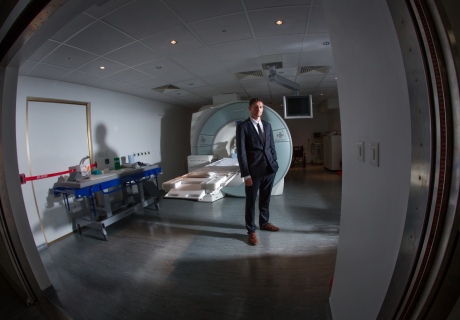First evidence for higher state of consciousness found
by Ryan O'Hare

Researchers have uncovered the first scientific evidence of a 'higher' state of consciousness.
In the study, neuroscientists observed a sustained increase in the diversity of brain signals of people under the influence of psychedelic drugs, compared with when they were in a normal ‘awake and aware’ state.
This measure of the complexity of brain activity – called neural signal diversity – provides an index of the level of someone’s consciousness.
Scientists have shown that people who are awake have more diverse neural activity using this scale than those who are asleep. Previous studies have tended to focus on lowered states of consciousness, such as when people are asleep, under anaesthesia, or are in a ‘vegetative’ state.
People often say they experience insight under these drugs – and when this occurs in a therapeutic context, it can predict positive outcomes. The present findings may help us understand how this can happen
– Dr Robin Carhart-Harris
Study author
The researchers say that while further research is needed using more sophisticated and varied models to confirm the results, they are cautiously excited.
“This finding shows that the brain-on-psychedelics behaves very differently from normal,” said Professor Anil Seth, co-director of the Sackler Centre for Consciousness Science at the University of Sussex, who led the research.
“During the psychedelic state, the electrical activity of the brain is less predictable and less ‘integrated’ than during normal conscious wakefulness – as measured by global signal diversity.
“Since this measure has already shown its value as a measure of ‘conscious level’, we can say that the psychedelic state appears as a higher ‘level’ of consciousness than normal, but only with respect to this specific mathematical measure.”
For the study, researchers from the Sackler Centre at Sussex reanalysed data that had previously been collected by Imperial College London and the University of Cardiff in which healthy volunteers were given one of three drugs known to induce a psychedelic state: psilocybin (‘magic mushrooms’), ketamine and LSD.
Scanning the brain on psychadelics
Using brain imaging technology, they measured the tiny magnetic fields produced in the brain and found that, across all three drugs, the neural signal diversity was reliably higher.
The researchers stress this does not mean that the psychedelic state is a ‘better’ or more desirable state of consciousness, but shows that the psychedelic brain state is distinctive and can be related to other global changes in conscious level (e.g. sleep, anaesthesia) by application of a simple mathematical measure of signal diversity.

Dr Robin Carhart-Harris
Dr Robin Carhart-Harris, from the Department of Medicine at Imperial, said: “Rigorous research into psychedelics is gaining increasing attention, not least because of the therapeutic potential that these drugs may have when used sensibly and under medical supervision.
“The present study’s findings help us understand what happens in people’s brains when they experience an expansion of their consciousness under psychedelics.
"People often say they experience insight under these drugs – and when this occurs in a therapeutic context, it can predict positive outcomes. The present findings may help us understand how this can happen.”
Dr Suresh Muthukumaraswamy, from the University of Auckland, who was involved in all three initial studies, commented: “That similar changes in signal diversity were found for all three drugs, despite their quite different pharmacology, is both very striking and also reassuring that the results are robust and repeatable.”
During the psychedelic state, the electrical activity of the brain is less predictable and less ‘integrated’ than during normal conscious wakefulness
– Professor Anil Seth
Lead researcher
The findings could help inform discussions gathering momentum about the carefully-controlled medical use of such drugs, for example in treating severe depression.
In addition, the study adds to a growing scientific understanding of how conscious level (how conscious one is) and conscious content (what one is conscious of) are related to each other.
Professor Seth added: “We found correlations between the intensity of the psychedelic experience, as reported by volunteers, and changes in signal diversity.
"This suggests that our measure has close links not only to global brain changes induced by the drugs, but to those aspects of brain dynamics that underlie specific aspects of conscious experience.”
The research team are now working hard to identify how specific changes in information flow in the brain underlie specific aspects of psychedelic experience, like hallucinations.
-
‘Increased spontaneous MEG signal diversity for psychoactive doses of ketamine, LSD and psilocybin’ by Michael Schartner et al, is published in the journal Scientific Reports.
This article is adapted from materials from the University of Sussex.
Article text (excluding photos or graphics) © Imperial College London.
Photos and graphics subject to third party copyright used with permission or © Imperial College London.
Reporter
Ryan O'Hare
Communications Division